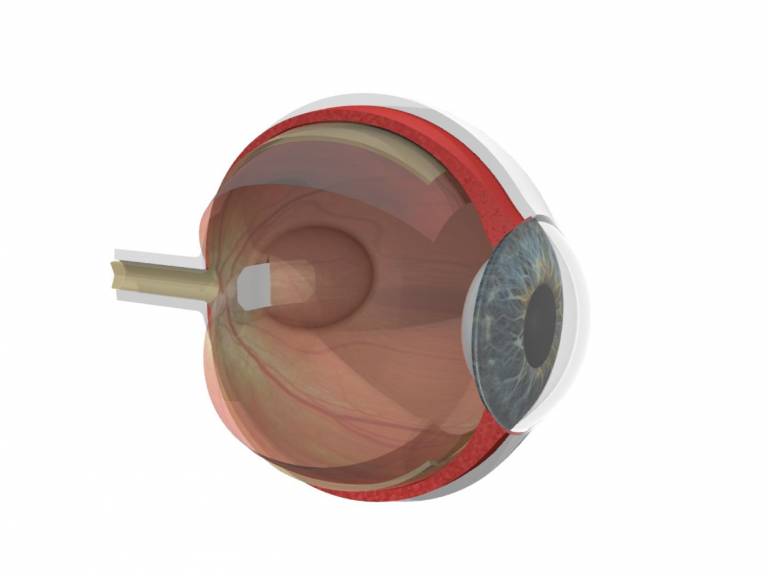Patients regain sight after being first to receive retinal tissue engineered from stem cells
20 March 2018
The first patients to receive a new treatment derived from stem cells for people with wet age-related macular degeneration (AMD) have regained reading vision according to a new study involving UCL.

The results of this small but ground-breaking clinical study, published in Nature Biotechnology, described the implantation of a specially engineered patch of retinal pigment epithelium cells derived from stem cells to treat people with sudden severe sight loss from wet AMD. It is hoped that it will also help treat dry AMD in the future.
It's the first description of a complete engineered tissue that has been successfully used in this way. The study is a major milestone for the London Project to Cure Blindness, a partnership between Moorfields Eye Hospital NHS Foundation Trust, the UCL Institute of Ophthalmology, and the National Institute for Health Research (NIHR).
AMD is the most common cause of sight loss in the UK, and can lead to a rapid loss of central (reading) vision. The two patients who underwent the procedure, a woman in her early 60s and a man in his early 80s, had the severe form of the condition (wet AMD) and declining vision. The study investigated whether the diseased cells at the back the patients' affected eye could be replenished using the stem cell patch. A specially engineered surgical tool was used to insert the patch under the retina in the affected eye of each patient in an operation lasting one to two hours.
The patients were monitored for 12 months and reported improvements to their vision. They went from not being able to read at all even with glasses, to reading 60-80 words per minute with normal reading glasses. Douglas Waters, 86, from Croydon, London, was one of two people who had received the retinal patch at Moorfields Eye Hospital during the trial. He developed severe wet AMD in July 2015 and received the treatment three months later in his right eye.
He said: "In the months before the operation my sight was really poor and I couldn't see anything out of my right eye. I was struggling to see things clearly, even when up-close. After the surgery my eye sight improved to the point where I can now read the newspaper and help my wife out with the gardening. It's brilliant what the team have done and I feel so lucky to have been given my sight back."
Professor Lyndon da Cruz, consultant ophthalmologist at Moorfields Eye Hospital NHS Foundation Trust said:
"The results suggest that this new therapeutic approach is safe and provides good visual outcomes. The patients who received the treatment had very severe AMD, and their improved vision will go some way to enhance their quality of life. We recognise that this is a small group of patients, but we hope that what we have learned from this study will benefit many more in the future."
Professor Pete Coffey, UCL Institute of Ophthalmology, co-author of the study said: "This study represents real progress in regenerative medicine and opens the door on new treatment options for people with age-related macular degeneration. We hope this will lead to an affordable 'off-the-shelf' therapy that could be made available to NHS patients within the next five years."
Source
Image
- Illustration of stem cell patch
Links
- Professor Peter Coffey
- Age-related macular degeneration
- UCL Institute of Ophthalmology
- London Project to Cure Blindness
- Moorfields Eye Hospital NHS Foundation Trust
Media contact
Henry Killworth
+44 (0) 20 7679 5296
h.killworth [at] ucl.ac.uk
 Close
Close

